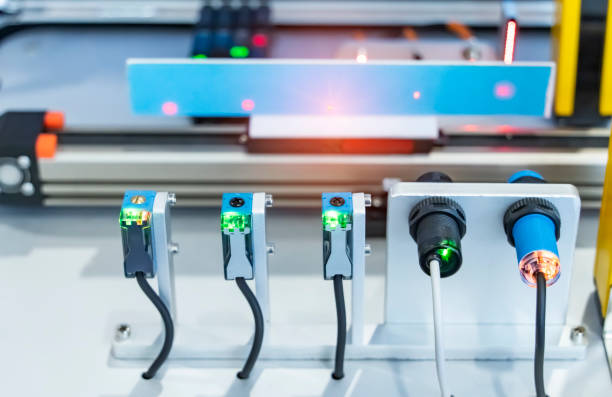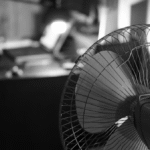In industrial automation, photoelectric sensors have become a must-have for spotting objects without making contact. You’ll find these tiny workhorses in everything from packaging lines and warehouses to electronics assembly and material transport. Because they respond fast, work in harsh environments, and don’t touch the items they monitor, they keep production running smoothly and predictably.
This guide breaks down how photoelectric sensors operate, the different types on the market, common applications, and tips for choosing the right one for your plant. For manufacturers who want reliable automation gear, OMCH stocks a full line of control devices and sensors, including photoelectric units and solid state relays.
How Photoelectric Sensors Work
A typical photoelectric sensor uses a light beam-usually an infrared or visible red LED-and a receiving element to monitor the area in front of it. When that beam hits an object or the object’s surface reflects it back, the sensor notices the change and sends out an electrical signal.
Most sensors work in one of these three modes:
- Through-beam: Light travels straight from a separate transmitter to a receiver, giving it the longest reach and highest spot-on accuracy.
- Retro-reflective: In this setup, the sender and receiver sit in the same housing, and a corner mirror sends the light right back.
- Diffuse reflective: Here, the sensor picks up whatever light bounces off the face of the item being scanned, no extra mirror needed.
Thanks to these options, photoelectric sensors can handle tricky tasks like spotting clear bottles, counting high-speed goods, or tracking tiny shifts in distance.
OMCH offers a full lineup of every type, each tweaked for the special dust, shock, or humidity levels found on modern production lines.
Key Applications in B2B Industries
Because they are small, flexible, and totally non-contact, photoelectric sensors pop up in almost every factory you can name. Here are some places where you see them every day.
Packaging and Food Processing
In packaging and food lines, these sensors keep operations fluent by:
- Spotting when a product arrives on a conveyor
- Following thin, clear film in wrapping gear
- Checking how much fill is in every bottle
- Making sure boxes are sealed tight and sporting labels
Their wash-down-friendly, sealed housings also let them work safely in areas where sprays and spills are routine.
Material Handling and Logistics
Photoelectric sensors show up almost everywhere in modern warehouses and conveyor systems. They help by:
- spotting packages moving along automatic belts
- guiding stackers and AGVs as they place pallets
- checking traffic at docks and storage lanes
- keeping barcode readers in perfect sync
Because lighting can change from bright sunlight to dim warehouse lights, supply-chain firms look for sensors that react fast and stay stable.
Electronics Manufacturing
In electronics plants, even tiny mistakes can cause big rework costs. Production teams trust these sensors to:
- spot circuit boards on the assembly line
- verify every component lands right on SMT feeders
- check that ICs and connectors are present
- guide robots as they reach, place, or lift parts
OMCH sensors are fine-tuned for micron-level precision, making them ideal for the high-detail world of electronics assembly.
Printing and Textile Industry
Fast-moving printing and fabric machines rely on photoelectric sensors to keep every job on track:
- guiding web material so it stays centered
- finding edge marks or color cues with split-second timing
- timing cuts and folds so sheets match each other
Their quick response and dust-proof housing let these sensors work nonstop in the dusty, high-speed world of print and textiles.
Automotive and Heavy Machinery
Inside modern automotive plants, photoelectric sensors are everywhere, quietly making the work smoother:
- Component check: They verify each part during-assembly, so mistakes get caught early.
- Door position: In robotic cells, the sensors show exactly when a door is open or closed.
- Paint monitoring: They watch the path of each car body, ensuring no areas are skipped or over-sprayed.
- Production tracking: The sensors follow body parts on the line, updating systems so schedules stay on track.
Rugged sensor housings from OMCH shrug off oil, harsh vibration, and the extreme heat-cold swings typical of an automotive plant.
Advantages of Using Photoelectric Sensors in Industrial Environments
For B2B firms, swapping in photoelectric sensors brings a clear set of wins on the shop floor:
High-Speed, Non-Contact Detection
Because they use light, these sensors spot fast-moving items-without touching them. That means no worn-out parts and no dirt sneaking inside.
Long Sensing Distance
Many models reach well over a meter, and through-beam versions stretch even farther in dusty or shiny areas.
Compact and Versatile Design
Mini, round, or flat cases fit almost any tight spot on a machine-without losing a drop of power.
Compatibility with Automation Systems
OMCH sensors speak PNP, NPN, and NO-NC languages-so they slot straight into PLCs, SCADAs, or any controller on the line.
Durability and IP Protection
Photoelectric sensors are built for tough factory floors where moisture, oil, chemicals, and extreme heat or cold are everyday issues. That’s why most available units carry an IP rating of 65 or higher.
For workplaces that see rapid changes in the environment, OMCH offers https://www.omchsmps.com/es/categoria-producto/ssr-relay/ that keep detection on target.
How to Select the Right Photoelectric Sensor
Picking the best photoelectric sensor for your business application starts with asking a few key questions:
Object Characteristics
- Color and material: For shiny, clear, or transparent surfaces, retro-reflective sensors with polarizing filters usually work best.
- Size and shape: Very small or oddly shaped parts benefit from sensors that deliver a narrow beam and high resolution.
Environmental Conditions
- Dust and humidity: Models with high IP ratings seal out dust and dampness; always check the label first.
- Ambient light: Modulated-light sensors ignore noise from shop lamps or daylight, making them great in mixed lighting.
Required Detection Range
Depending on your layout, choose short-range diffuse sensors or longer through-beam units that span greater distances.
Mounting and Alignment
Finally, confirm the housing style and any brackets will fit the space. OMCH designs often include adjustable mounts and built-in alignment lights to save time during installation.
Output Type and Integration
Before you buy, double-check that the sensor works with your control logic-NPN or PNP-and decide if you need an analog or digital signal.
Decision-makers can always refer to OMCHs online manuals or chat with our engineers to get the best sensor set-up for their automation plans.
Future Trends in Photoelectric Sensor Technology
As plants gear up for Industry 4.0, photoelectric sensors are being upgraded for smart manufacturing:
Smart Sensors with IO-Link
Many new units now include IO-Link or Ethernet ports that provide:
- Real-time health alerts
- Remote set-up
- Ongoing condition checks
This cuts unscheduled outages and supports predictive maintenance plans.
Miniaturization
Lean factories and collaborative robots demand smaller sensors, and today’s compact designs still deliver accurate detection.
Self-Calibration and Auto-Tuning
New models can re-tune themselves based on color, distance, or reflectivity, saving time that used to be spent fiddling with knobs.
Integrated AI and Edge Computing
In premium lines, sensors may run basic logic on the production floor, lightening the load on central servers and speeding up reactions.
OMCH is pushing these smart features in our sensors and controllers so customers stay ahead of the latest automation standards.
Conclusion
Photoelectric sensors play a vital role for any business that wants to automate tasks with speed and precision. From spotting small parts on a factory line to guiding robotic arms in a warehouse, these sensors work well in almost any setting, rain or shine.
For teams looking for dependable equipment, OMCH offers industrial-strength photoelectric sensors built with solid-state relay support, easy output modes, and a tough, long-lasting shell.

















